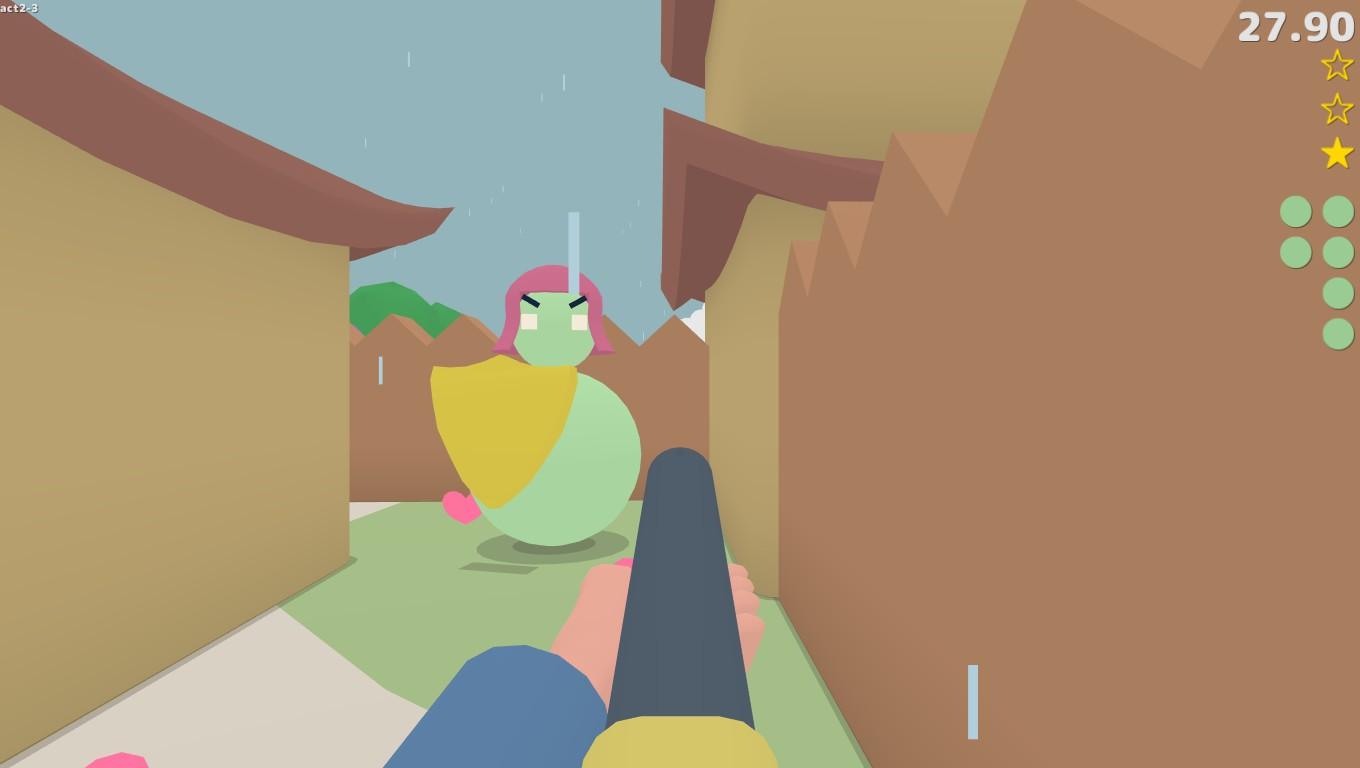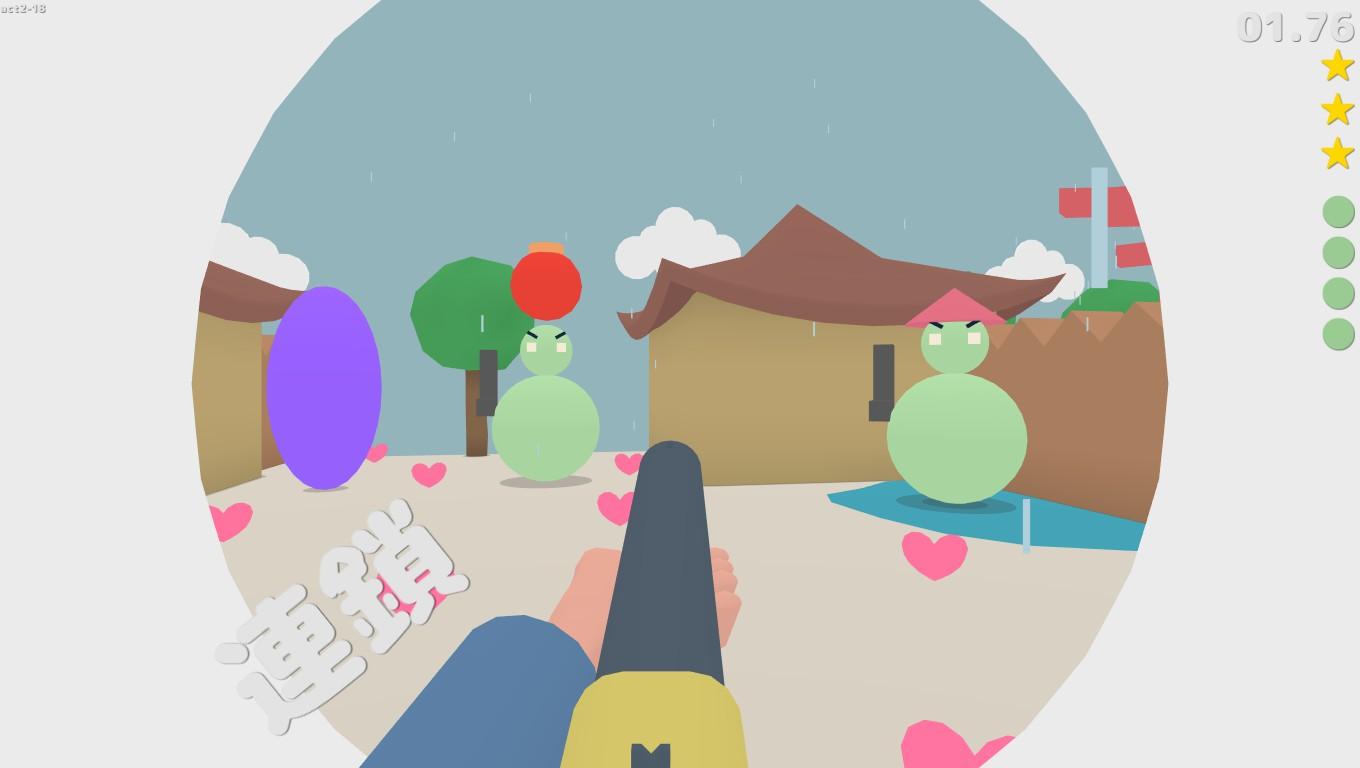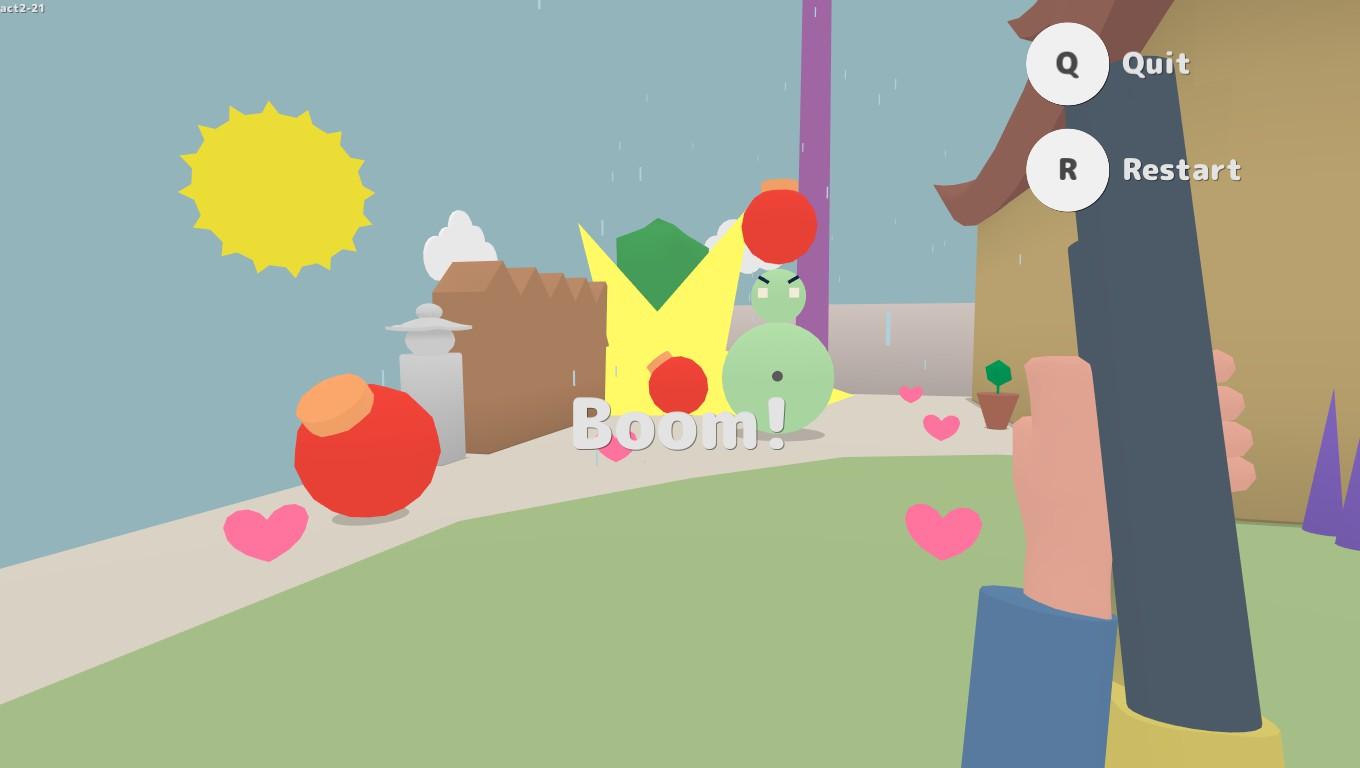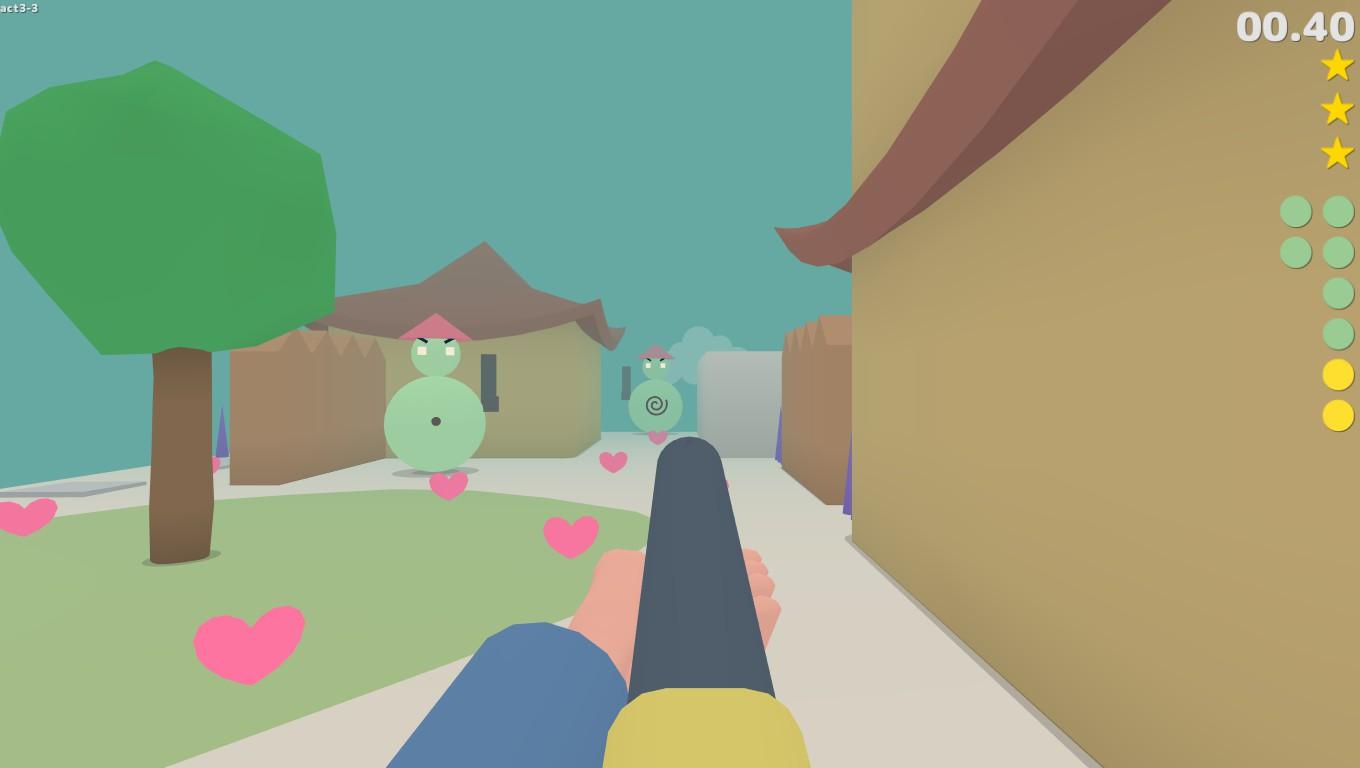
Jul
Lovely Planet Arcade – Review
The first thing I noticed about Lovely Planet Arcade was that I couldn’t look up or down. This immediately took me back to Doom—not the new one, mind, but the original, classic Doom. It felt like an unspoken reference to me. In Doom’s time, this limitation may have existed for technical reasons, but Love Planet Arcade digs it out again and squeezes puzzle game juices onto it.
Lovely Planet Arcade is a combination of shooting, puzzling tempered with lots of trial and error. At the start of each level, you find yourself in a surreal and dreamlike little environment. You have a shotgun, and there are green snowmen with conical hats (or sometimes helmets). They have angry eyebrows, so they’re the bad guys, and you must shoot them.

The game feels in equal parts bizarre and abstract. Not only does it not adhere to any kind of realism, but it actually fights against the notion of realism. This abstraction permeates the game through and through, from its minimalistic visuals, through its lack of narrative and right down to its simplistic gameplay.
The game affects a Japanese style, with its use of torii gates, Japanese architecture, red lanterns (that are actually self-activating bombs), and very brutal use of kanji characters. At first, it’s tempting to think that the game is representing something: killing old-timey gangsters in Japan, perhaps? But as it goes on, it becomes increasingly unhinged from reality until it starts feeling like a game from an entirely different dimension.
For instance, there is one environmental hazard you will see fairly often that consists of red blobs strewn about the ground. Touch them, and as you fail the level, you will be given only the vaguest possible hint of what they might be: “Sharp!”, “Spicy!”, “Painful!”, “Acid!”. I felt like this deliberate ambiguity is a nod to the often poor English localisations of Japanese games of yore. Not unlike those games, Love Planet Arcade feels wonderful in the literal sense of the word. There’s wonder aplenty to be found in the game’s abstraction.

Lovely Planet Arcade starts off simple enough, with you running around the levels, your shotgun going spiff and poof, blowing polygonal smoke and killing enemies in one shot each. As you progress through the levels, new mechanics are introduced. All of these are presented within the environment, rather than being upgrades to your character. You have the same abilities at the end of the game as you do at the beginning: you can run, shoot and jump. The difference lies in the skill that you accrue.
The game doesn’t waste words explaining these mechanics to you, forcing to figure them out by yourself. It also forces you to pick up skills on your own. What seem at first like skilful plays of finesse that you have developed turn into essential skills later in the game. There is a kind of genius to this: when the game can force you to play in a certain way without you realising it. In an age full of tutorial pop-ups, this is a welcome change.
Lovely Planet Arcade is the sort of game that would be seen in a bar sharing a beer (or perhaps sake?) alongside its gory friends Hotline Miami and Super Meat Boy. As you get familiar with the game’s controls and mechanics, the game starts to up the difficulty steadily. Failure is a central element of playing the game. You will fail, over and over, and each time, you will be told explicitly why you failed, in no more than one word. The constant failing sounds like it should get frustrating very quickly, and yet, it doesn’t.
This is achieved by the game never penalising the player for losing: neither in a story context, nor in a game experience context. There are no loading screens to deal with, no elaborate death animations, no mocking messages. Restarting a level with the R key is as much a part of the game’s controls as jumping with Space, or shooting with the left-mouse button. Another subtle factor was that the game’s music doesn’t stop when you fail at a level, which keeps up the illusion that your failures are not false ends, but rather, a part of the same stream of gameplay you are experiencing. This is where not having a story falls into the game’s favour. In a world where trees rotate and giant rolls of sushi sit on the ground blocking my path, who am I to question the character’s ability to restart a level at will?

As I went about running and gunning through the bite-sized levels, I found the game actively challenging my accuracy, reflexes and problem-solving skills. As you fail and restart over and over, a precise set of instructions takes form in your head, guiding you through that level. It’s usually not that hard to eventually ‘figure out’ the level, but the game also challenges your timing. You are awarded up to 3 stars for how quickly you complete the level. Your current star score is conveniently displayed onscreen, so that you can always restart a level instantly if it drops.
Another convenience the game presents is letting you play any level, so long as you have unlocked the Act it is a part of. This was another reason why the game never came across as frustrating to me. If you can’t seem to ‘figure out’ a level, you can always skip it and come back to it later with a fresh mind. I did, and I was pleasantly surprised with how coming back after a while helped solve the game’s puzzles.
One niggling annoyance I had was with a new enemy introduced in the game’s final act. I won’t spoil what it does, but it made me think I’d encountered a game-breaking bug. I e-mailed the developer about it, hoping he’d fix it soon so I could get back to writing this review. Instead, I was told that it was no bug at all. Getting back into the game, I got the hang of how the associated mechanic works. Still, I can’t help but think that this enemy could have been handled in a more elegant way. I suspect developer Quicktequila is going to get many more such ‘bug reports’ yet.

It took me 4 hours to ‘beat’ Lovely Planet Arcade, by which I mean playing through every single level and beating the vast majority of them. This is clearly a game catered towards speedrunners and lovers of time trials. I, however, was satisfied with my mostly one-star performance in most of the levels of the game, and enjoyed the process of figuring out the ‘right’ path through a level. There were even a few levels that I never managed to figure out, all of them in the final act of the game. Perhaps I’ll go back to them some time.
All in all, Lovely Planet Arcade succeeds at what it sets out to do: creating a tight, compact and solid package of puzzle-solving and first-person shooting. Every part of the game comes together just right. It may not be particularly ambitious, but that’s because it doesn’t need to be. It certainly manages to delight, surprise and tickle more than games with exponentially larger budgets and sizes. That’s really all anyone can ask for from an arcade.
This review is based on a copy provided by the publisher, tinyBuild Games. Lovely Planet Arcade is now available on Steam. It’s retailing for $5.99, but you can get it at a 15 percent discount until 29th July. It’s a fair price.
